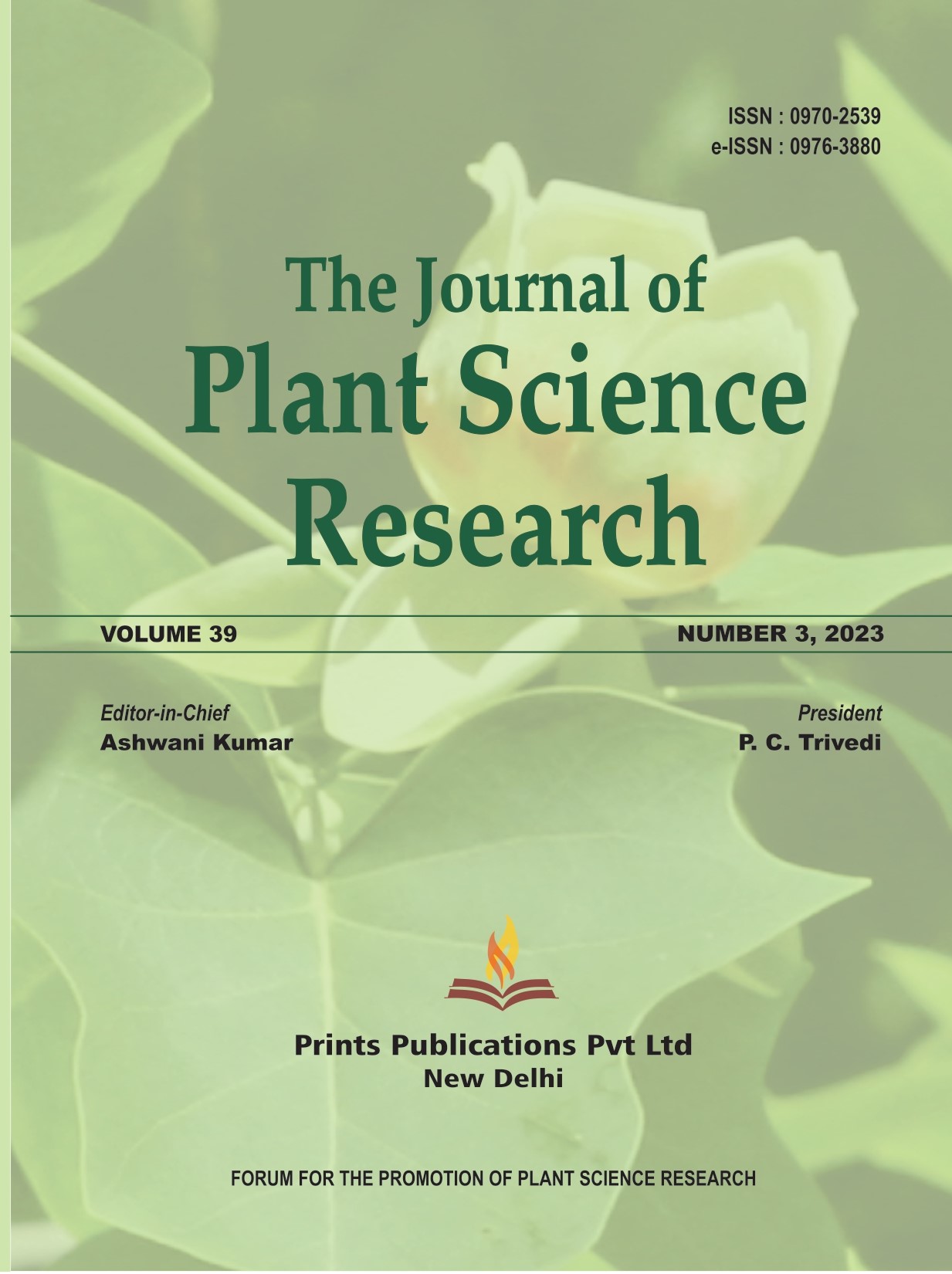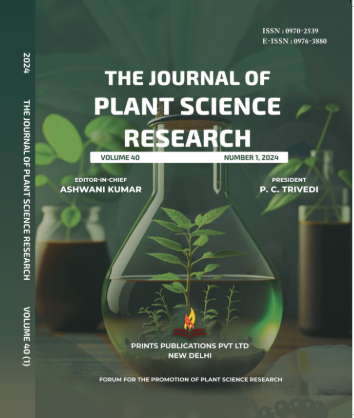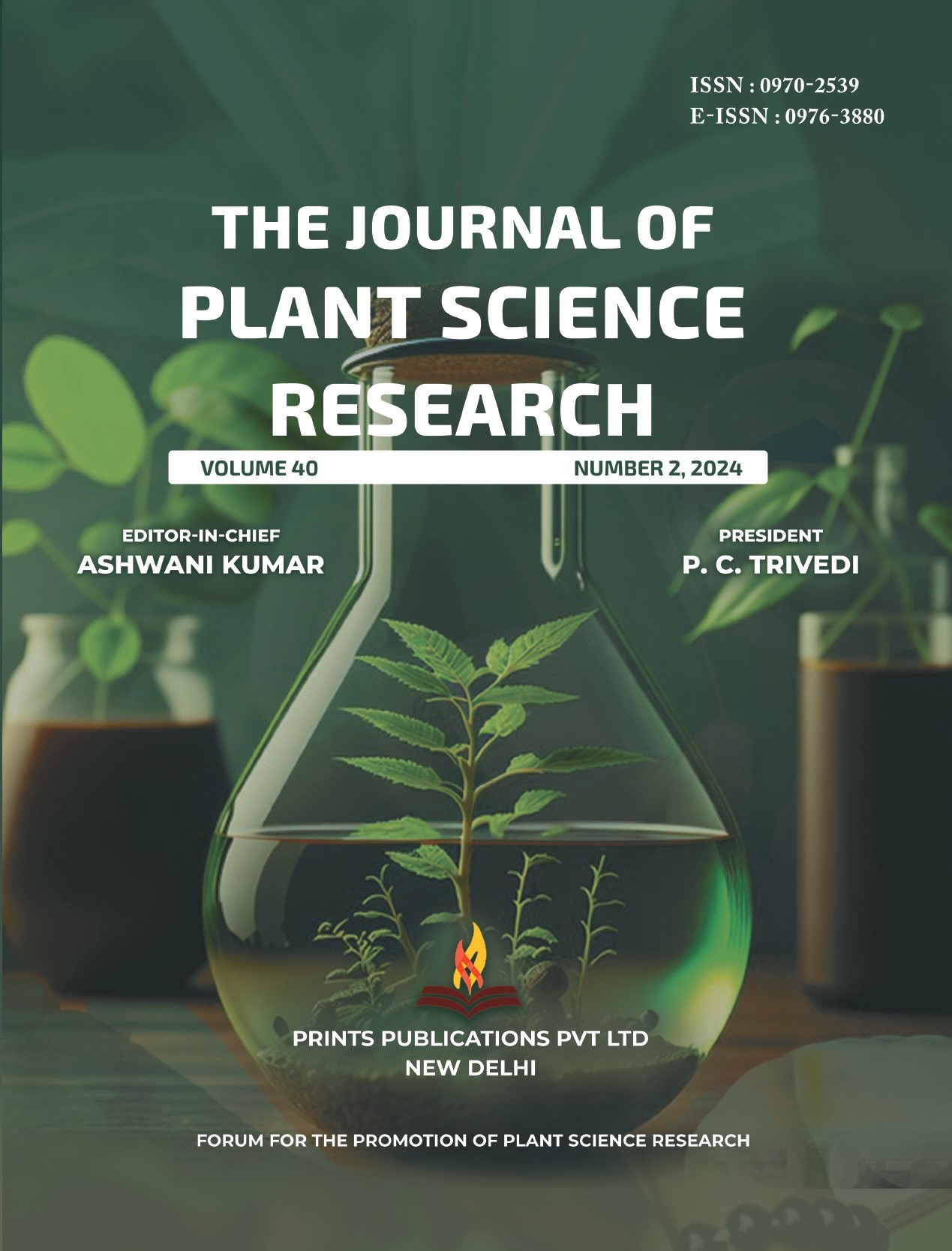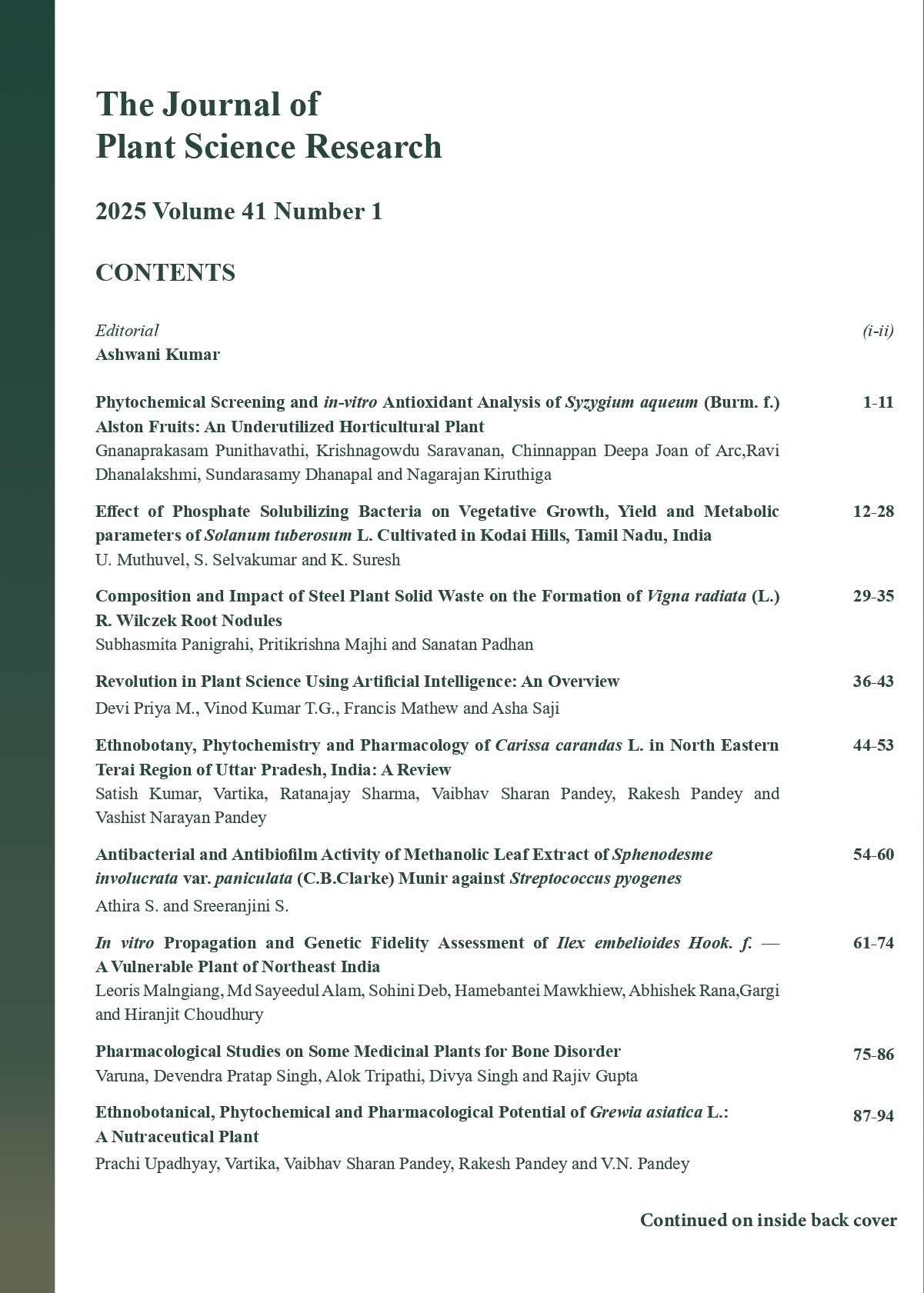The Journal of Plant Science Research - A UGC Care-Listed Journal
Published in Association with Forum For the Promotion of Plant Science Research
Current Volume: 41 (2025 )
ISSN: 0970-2539
e-ISSN: 0976-3880
Periodicity: Tri-annual
Month(s) of Publication: April, August & December
Subject: Botany
DOI: 10.32381/JPSR
Online Access is Free for Life Member
In vitro Antibacterial and Antibiofilm Activity of Azadirachta indica Plant Extracts against Multi-drug Resistant and Biofilm Forming Staphylococcus aureus and Escherichia coli
By : A. P. Nagrale, V. A. Kamble
Page No: 437-443
Abstract
Multi-drug resistance of Escherichia coli and Staphylococcus aureus bacteria to a wide variety of antibiotics has been linked to unwise use of the same antibiotics against infections in food and pet animals around the world, as well as in humans. The major factor contributing to microbial resistance is the microbes’ biofilm formation which allows them to withstand in extreme environmental conditions and antimicrobial agents. In the current study, multi-drug resistant and the biofilm forming E. coli and S. aureus strains have been isolated from the different types of specimens. Commercially available antibiotic discs were used for the study of multi-drug resistance patterns in the isolated strain and also studied with disc diffusion assay. The antibiotic susceptibility and biofilm forming ability of 76 E. coli and 57 S. aureus cultures isolated from the clinical samples were tested. Apart from multiple drug resistance traits, biofilm production by the microbe is one of the phenomena which renders multiple drug resistance to the isolate as well. Susceptibility testing of different solvent extracts of plants, namely Azadirachta indica. The sensitivity of all the plant leaf extract was assessed by the well diffusion method and determined in terms of inhibition zone diameter. The inhibitory activity against the clinical isolates reflects an inhibition zone range of 10 mm to 40 mm. All of the above biofilm producing isolates showed varying degrees of antimicrobial activity.
Authors :
A. P. Nagrale : Department of Microbiology, Shri. D.M. Burungale Science and Art’s College Shegaon, Dist: Buldana, Maharashtra, India.
V. A. Kamble : Department of Microbiology, Adarsha Science, J. B. Arts and Birla Commerce Mahavidyalaya, Dhamangaon Rly, Distt. Amravati.
DOI: https://doi.org/10.32381/JPSR.2022.38.01.47






